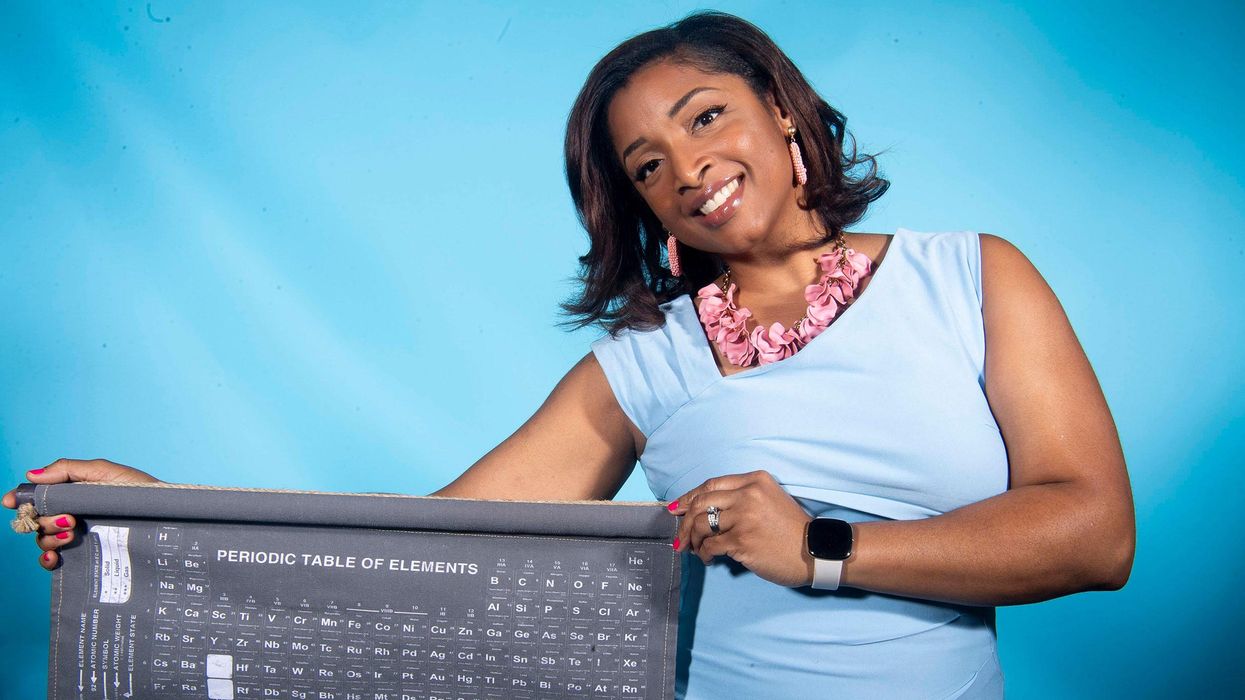Editor's note: This story is part of CNN's coverage of Black History Month and its ongoing commitment to honoring unsung heroes.
(CNN) — As a kid, Clarice Phelps often turned to one image for inspiration.
While other seventh graders hung '90s pop band and movie posters on their walls, Phelps put up a poster of Mae Jemison, the first Black female astronaut to launch into space.
"Mae started it all for me," said Phelps, who in learning about Jemison realized she — a Black girl from Nashville's Edgehill public housing — could reach for big dreams, too.
Because of her race, her gender or her family's income, Phelps would face bias at most every step, she said, on her way to helping make a discovery that would change how scientists chart the building blocks of the universe.
As the first Black woman to break such scientific ground, Phelps now feels a responsibility to guide kids like the one she once was, she said — even if others' doubts about her sometimes still echo in her mind.
A lonely journey by an 'unlikely scientist'
An "unlikely scientist," Phelps had few scientific influences beyond a stack of home encyclopedias and "Beakman's World" on TV, she's said. And growing up poor with three sisters and a single mom, advanced — and expensive — schooling didn't seem likely.
But Phelps was a smart kid with a passion for learning, she said. She was also highly determined.
Once, after a childhood music teacher sneered at her pawn shop-bought violin, Phelps devoted hours of practice to earn first chair in the orchestra, she said in a 2019 TEDx Talk. "I poured my heart and soul into that violin because I saw it as an extension of who I wanted to be," she said.
"I took everything in my life like that violin," she said, refusing to let others' assumptions limit what she might achieve.
Phelps later was selected into a magnet school, where she met two teachers who, she said, were "instrumental" in nurturing her passion for science. That love for experimentation and discovery prompted her to pursue a bachelor's degree in chemistry at Tennessee State University and later enlist in the US Navy's Nuclear Power School.
Their stories aren't widely told, but these Black women and men helped shape history
When Phelps turned her sights to radiochemistry — the study of radioactive substances — racial bias and sexism tried to get in her way, she said. While women make up half the US workforce, only 27 percent work in science, technology, engineering and math, often dubbed STEM, US 2019 census data shows; of those, only 2 percent are Black women, according to 2015 National Science Foundation stats.
"For the first 18 years of my career, I was the only Black woman in my field. When I was in the Navy, I was the only Black girl in my division. Afterwards in my lab, I was the only Black woman in the whole facility — and initially they thought I was the janitor," she told CNN, recalling requests to grab the trash.
"It's isolating," said Phelps, who after also served as an engineering laboratory technician aboard the USS Ronald Reagan. "You feel like you have to represent your entire race and descend the racial stereotypes ... especially in nuclear and radiochemistry."
Then in 2010, Phelps joined an international mission to do something else unprecedented: Create Element 117.
How to fill a gap in scientific knowledge
For years, there had been a single square in the seventh row of the periodic table of elements that scientists struggled to fill. No element with the precise chemical and physical properties to fit that spot in the familiar chart ever had been found or synthesized.
It would have to have 117 protons in its core. And like other so-called "superheavy elements" that don't exist in nature, it would have to be created in a lab.
Work like this, Phelps explained, aims eventually to find a superheavy element stable enough to provide "new avenues for fuel and energy sources" and offer insight into the beginnings of the universe and the matter that existed during the Big Bang.
As part of the discovery team, Phelps purified the element berkelium to create a film — a painstaking, monthslong process. Then, collaborators in Germany and Russia "relentlessly bombarded" it for months with calcium.
The experiment produced six unique atoms, each with the required 117 protons. It was declared a success in 2012, and four years later, the International Union of Pure and Applied Chemistry — the world authority on chemistry — officially recognized Element 117 as part of the periodic table, along with three other new elements.
Since Phelps' team at Oak Ridge National Laboratory and other institutions in Tennessee laid the groundwork for discovery, Element 117 was officially named "tennessine" (Ts). It's the second-heaviest known element on Earth, and though its use is limited to research, scientists believe it is a critical stepping stone toward the creation of future superheavy elements.
"We can't imagine where tennessine could take us," said author of "Superheavy: Making and Breaking the Periodic Table" Kit Chapman, noting human-generated elements are used "in smoke detectors, to treat cancers, even to power rovers on Mars."
With the discovery, the girl with the Jemison poster on her wall had "claimed a seat at the periodic table," Phelps said in her TEDx Talk.
But despite the feat, Phelps again found herself fighting for recognition.
'No one can take away what you know'
When her lab celebrated tennessine, Phelps was left off the gala's guest list; when her supervisor got her in, no place card bore her name, she said. Even the plaque listing scientists involved in the discovery omitted her.
"They had left me off this whole thing," Phelps said. "I felt embarrassed because everyone is wandering around this luncheon, and I literally didn't have a seat at the table. I went outside, and I was crying."
Phelps later was told her name had been cut off by mistake following a spreadsheets' line break, she said.
Phelps' "name was inadvertently omitted from a plaque dedicated to (Oak Ridge National Laboratory) staff credited with the discovery of tennessine, an error we quickly corrected," the institution told CNN. The lab "is incredibly proud of Clarice Phelps — a US Navy veteran, a prolific scientist, an active member of the East Tennessee community.
"As the first Black woman to be involved in the discovery of an element, she is an inspiration for the next generation of women and people of color in STEM," it said.
At the time, though, the incident — like the doubting orchestra teacher — served again to harden Phelps' resolve.
After winning the monthslong battle to get the plaque recommissioned with her name on it, Phelps started talking with reporters about the significance of tennessine and her role on the team. And she was acknowledged by Chapman, a science historian, and British physicist Jess Wade, who has written over a thousand Wikipedia biographies about women and minority scientists, as the first Black woman involved in the discovery of a new element.
Phelps, now a mom of three, said she wants to be a visible role model, like Jemison: "I want to be that person for that little girl who's looking for somebody that looks like them, doing things that people say they can't do."
Still, though, she battles imposter syndrome — the result of years of professional micro- and macro-aggressions — and tries to fight it by remembering: "I did that work," she said.
"My hands were in the glove box handling that material," said Phelps, who's working to finish her PhD in nuclear engineering. "I didn't do that by myself, there was a team, but I know what I did, and no one can take that from me."
That's the lesson she tries to impart as a board member and vice president of Yo-STEM, a non-profit that aims to bring STEM education to underserved communities like the one she grew up in.
"No one can take away what you know," she said: "your experience and knowledge and your self-worth."
The-CNN-Wire
™ & © 2023 Cable News Network, Inc., a Warner Bros. Discovery Company. All rights reserved.
- Black History Month: The First Black Oscar Winner ›
- Black History Month Events Cancelled by Alabama School District, Community Responds ›

















































